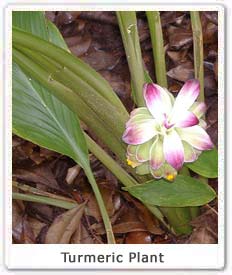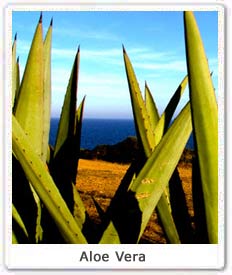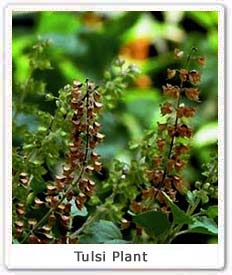
10:38 AM

Unknown
Classification
| Kingdom : | Plantae |
| Division | Magnoliophyta |
| Class: | Liliopsida |
| Subclass : | Zingiberidae |
| Order : | Zingiberales |
| Family : | Zingiberaceae |
| Genus : | Curcuma |
| Species : | C. longa |
| Scientific Name : | Curcuma longa |
| Found In : | Sanjay Gandhi National Park |
Other names : Kunyit, Haridra, Haldi, Halada, Manjal, Zirsood, terre merite, Holdi, Indian Saffron, curcuma, Pasapu, Arishina are the other related names used for the Turmeric Kunyit, Haridra, Haldi, Halada, Manjal, Zirsood, terre merite, Holdi, Indian Saffron, curcuma, Pasapu, Arishina are the other related names used for the Turmeric Description : The plant of Turmeric is a herbaceous perennial, which is 60 -90 cm high. It has a short stem. It has large leaves oblong and up to  one meter long. Flowers of the turmeric appear on a spike like the stalk. Its flowers are yellow white in colour. They are sterile and donot produce viable seed. The lamina is green above and pale green below, and is 30 -40 cm long and 8 -12 cm wide. Approximately 30 flowers are produced in a spike. Inflorescence is a central spike of 10 -15 cm in length. Its pant looks like the ginger pant. Location : It is the widely cultivated tropical plant of India, which is grown from sea level to 1200 meter MSL. It is widely grown in the Sanjay Gandhi National Park of India. Cultivation methods : Turmeric plant is panted in the month of September to October. It grows in light black, black clayey loams, and red soils in irrigated and rainfed conditions. The rhizomes are planted 5 7 cm deep. This crop is planted by the small rhizomes with one or two buds. It is harvested after 9 -10 months of planting. The lower leaves turn yellow and fall with age.
one meter long. Flowers of the turmeric appear on a spike like the stalk. Its flowers are yellow white in colour. They are sterile and donot produce viable seed. The lamina is green above and pale green below, and is 30 -40 cm long and 8 -12 cm wide. Approximately 30 flowers are produced in a spike. Inflorescence is a central spike of 10 -15 cm in length. Its pant looks like the ginger pant. Location : It is the widely cultivated tropical plant of India, which is grown from sea level to 1200 meter MSL. It is widely grown in the Sanjay Gandhi National Park of India. Cultivation methods : Turmeric plant is panted in the month of September to October. It grows in light black, black clayey loams, and red soils in irrigated and rainfed conditions. The rhizomes are planted 5 7 cm deep. This crop is planted by the small rhizomes with one or two buds. It is harvested after 9 -10 months of planting. The lower leaves turn yellow and fall with age.
Medicinal uses : It is taken as the blood purifier and is very useful in the common cold, leprosy, intermittent, affections of the liver, dropsy, inflammation and wound healing. The rhizome of the turmeric plant is highly aromatic and antiseptic. It is even used for contraception, swelling, insect stings, wounds, whooping cough, inflammation, internal injuries, pimples, injuries, as a skin tonic. Sweetened milk boiled with the turmeric is the popular remedy for cold and cough. It is given in liver ailments and jaundice. Other uses : The powered rhizome of this plant is used as an condiment and as an yellow dye. Its is used to colour and flavour the foodstuff. It is used in the preparation of medicinal oils, ointments and poultice. It is even used in the cosmetics. Cultural Importance : For thousand of years it has been used in the Hindu religious ceremonies. It is the common belief among the the Hindus that Turmeric improves fertility. The dry turmeric root is considered as the symbol of purity and prosperity. It is used in Indian rites and rituals. Turmeric mixed in water is poured on the God and Goddesses. The dried turmeric roots in betel leaves are given to the women during the ceremonies as they are considered as fertile and bring good luck. Turmeric power is applied on the main entrance of the Indian Houses. The priests in the temples put tilak on the forehead with the turmeric power. Married women in India has to put Sindur a vermilion paste (mixture of turmeric with camphor).

3:46 PM

Unknown
Classification
| Kingdom : | Plantae |
| Division | Magnoliophyta |
| Class: | Liliopsida |
| Order : | Asparagales |
| Family : | Asphodelaceae |
| Genus : | Aloe |
| Species: | A .vera |
| Zoological name : | Aloe Vera |
| Found In : | Ranthambore Wildlife Sanctuary |
Other names : Cape aloe, Aloe curacao, Barbadoes aloe, Venezuela aloe, Indian alces, Ghirita, Lu hui, Star Cactus are the other names used for the Aloe Vera. It is also called miracle plant, Burn plant, medicine plant and first-aid-plant.
Description : Aloe Vera grows to a height of 12 to 16 inches. It has a fibrous root system. It does not have stems. It has thick freshly leaves with sharp points, which are up to 18 inches long and 2 inches wide at the base. Its leaves are even long and triangular in shape. The tissue in the center of the  Aloe leaf contains a gel which yields the aloe gel. Its leaves are rich in water that is why it can survive for years. These leaves have spiky margins and are blotched creams. It is the member of the Lilly family. The roots of the pant are thick and fibrous. The fruit is the triangular capsule containing numerous seeds.
Aloe leaf contains a gel which yields the aloe gel. Its leaves are rich in water that is why it can survive for years. These leaves have spiky margins and are blotched creams. It is the member of the Lilly family. The roots of the pant are thick and fibrous. The fruit is the triangular capsule containing numerous seeds.
Other species of Aloe Vera : There are more than 200 species of Aloe Vera. Aloe Barbadensis Miller, Aloe Saponaria, Aloe Chinensis, Aloe Variegata, Aloe Forex, Aloe Lalifolia and Curacao Aloe are some of the known species of Aloe Vera.
Location : Aloe Vera is cultivated throughout India. It is commonly found in Mumbai, Gujrat and South India. It mainly grows in the tropical and sub tropical areas. It grows well on sandy and well drained soil. It is widely grown in the Ranthambore National Park in India.
Cultivation methods : Aloe Vera plant is propagated through the seed. It prefers a well drained sandy soil in sunny location. Aloe Vera needs the temperature of above 40 degrees. They should be potted in the spring season and watered carefully until established. It grows in the arid climate. They should be watered regularly in the summers. But over watering can kill the plant. It also grows in partial shade. It reaches the maturity inn four years when the leaves are harvested.
Medicinal uses : Aloe Vera is the herbal plant, used to heal the burn marks. Aloe Vera cures the skin diseases. It can also be used to remove dandruff from the hair. Aloe Vera is taken internally for the stomach disorders. The leaves of Aloe Vera is used for the treatment of facial edema or swelling. Its fluid is beneficial in reducing the inflammation and pain. Aloe Vera is used in cosmetics and even in the food industry. Curacao aloe acts as laxative, which is used against constipation. The fresh juice of its leaf blades can be applied directly to the ulcers, burns, sunburns, and fungal infection. Organic Aloe Vera juice reduces acidity. It prevents from fungus, influenza virus, measles, and high fever.
Other uses : Aloe Vera is a very popular potted plant. It is grown in houses for the decoration. The leaf sap is used to make a soothing and healing moisturizing cream, which is good for the dry skin. It is used in the making of anti wrinkle cream. It is even used in the preparation of shampoos.
Cultural Importance :Aloe Vera has been mentioned several times in the sacred scriptures. It is believed to have been used for the preservation of the body of the Jesus Christ. It is called as the plant of immorality. It is also mentioned in the holy book of Bible. It has been used by the tribal people as a medicine for the century.

5:51 PM

Unknown
Classification| Kingdom : | Plantae |
| Division | Magnoliophyta |
| Class: | Magnoliopsida |
| Order : | Lamiales |
| Family : | Lamiaceae |
| Genus : | Ocimum |
| Species : | O. tenuiflorum |
| Scientific Name : | Ocimum Sanctum |
| Found In : | Gir National Park and Sasangir National Park |
Other names : It is known as Holy Basil in English and Tulasi in Sanskrit. Other names used for the Tulsi are Manjari, Krishna Tulsi, Trittavu, Tulshi and Thulsi.
Description : Tulsi is a heavy branched having hair all over. It attains the height of about 75 – 90 cm. It has round oval shaped leaves which are up to 5 cm long. The leaves are 2- 4 cm in length. Its seeds are flat. Its flowers are purple – creamish in colour. The Tulsi with the green leaves is called the Shri Tulsi and one with the reddish leaves is called the Krishna Tulsi. Its seeds are yellow to reddish in colour. Leaves of Tulsi contains very essential oil.

Other species : Ocimum canum (Ram tulsi or Kali Tulsi), Ocimum basilicum, Ocimum Kilmand, Ocimum scharicum are the other related species of the Tulsi (Ocimum Sanctum).
Location : Tulsi is widely grown in the Gir Wildlife Sanctuary and Sasangir National Park in India. Tulsi grows wild in tropics and warm regions.
Cultivation methods : Tulsi seeds germinate easily. The seeds are mainly sown in the spring season. They are watered from time to time and germinated in one to two weeks. Tulsi prefers rich soil for its growth. It requires full sunlight. It is mainly grown in the temperate climate.
Medicinal uses : Tulsi has got the great medicinal value. Tulsi is taken as the herbal tea. The oil extracted from the Karpoora Tulsi is mostly used in the herbal toiletry. Its oil is also used against the insects and bacteria. The Rama Tulsi is the effective remedy for the Severe acute Respiratory Syndrome. Juice of its leaves gives relief in cold, fever, bronchitis and cough. Tulsi oil is also used as the ear drop. Tulsi helps in curing malaria. It si very effective against indigestion, headache, hysteria, insomnia and cholera. The fresh leaves of Tulsi are taken by the million of people everyday. For over the centuries Tulsi (the queen of herbs) has been known for its remarkable healing properties.
Other uses : Many people wears the Tulsi beads, which is said to have certain physical and medicinal properties. Its wood is considered as more powerful than any other gem that helps in protecting one from the negative influences. One can also buy several handicraft jewellery items made of Tulsi wood.
Cultural Importance : Tulsi is the sacred plant dearer to the Lord Vishnu. Tulsi symbolises purity. It is considered as the holy plant in the Indian Subcontinent. Tulsi got its name from Tulasi Devi, who was one of Lord Krishna's eternal consorts. In India people grow Tulsi as the religious plant and worship it. Its leaves are used in temples for the worship purposes and also on the several occasions such as marriage. A Hindu house is considered incomplete without the Tulsi plant in the courtyard. Tulsi is belived to promote longevity and life long happiness. Hindus perform special Tulsi puja in the Kartik month which starts after Sharad Poornima. It is the time of the Tulsi vivah (marriage). On this day Tulsi is decorated and coloured as a bride.Even today people in India maintain a potted Tulsi plant. The womens water the plant, light up the diya near it and worships it daily. The stems, leaves, seeds and even the soil is considered as holy. According to the ancient texts Tulsi is glorified as the one who helps in bringing people closer to the divine.
 one meter long. Flowers of the turmeric appear on a spike like the stalk. Its flowers are yellow white in colour. They are sterile and donot produce viable seed. The lamina is green above and pale green below, and is 30 -40 cm long and 8 -12 cm wide. Approximately 30 flowers are produced in a spike. Inflorescence is a central spike of 10 -15 cm in length. Its pant looks like the ginger pant.
one meter long. Flowers of the turmeric appear on a spike like the stalk. Its flowers are yellow white in colour. They are sterile and donot produce viable seed. The lamina is green above and pale green below, and is 30 -40 cm long and 8 -12 cm wide. Approximately 30 flowers are produced in a spike. Inflorescence is a central spike of 10 -15 cm in length. Its pant looks like the ginger pant. 


 10:38 AM
10:38 AM
 Unknown
Unknown
 Posted in
Posted in  Aloe leaf contains a gel which yields the aloe gel. Its leaves are rich in water that is why it can survive for years. These leaves have spiky margins and are blotched creams. It is the member of the Lilly family. The roots of the pant are thick and fibrous. The fruit is the triangular capsule containing numerous seeds.
Aloe leaf contains a gel which yields the aloe gel. Its leaves are rich in water that is why it can survive for years. These leaves have spiky margins and are blotched creams. It is the member of the Lilly family. The roots of the pant are thick and fibrous. The fruit is the triangular capsule containing numerous seeds.

